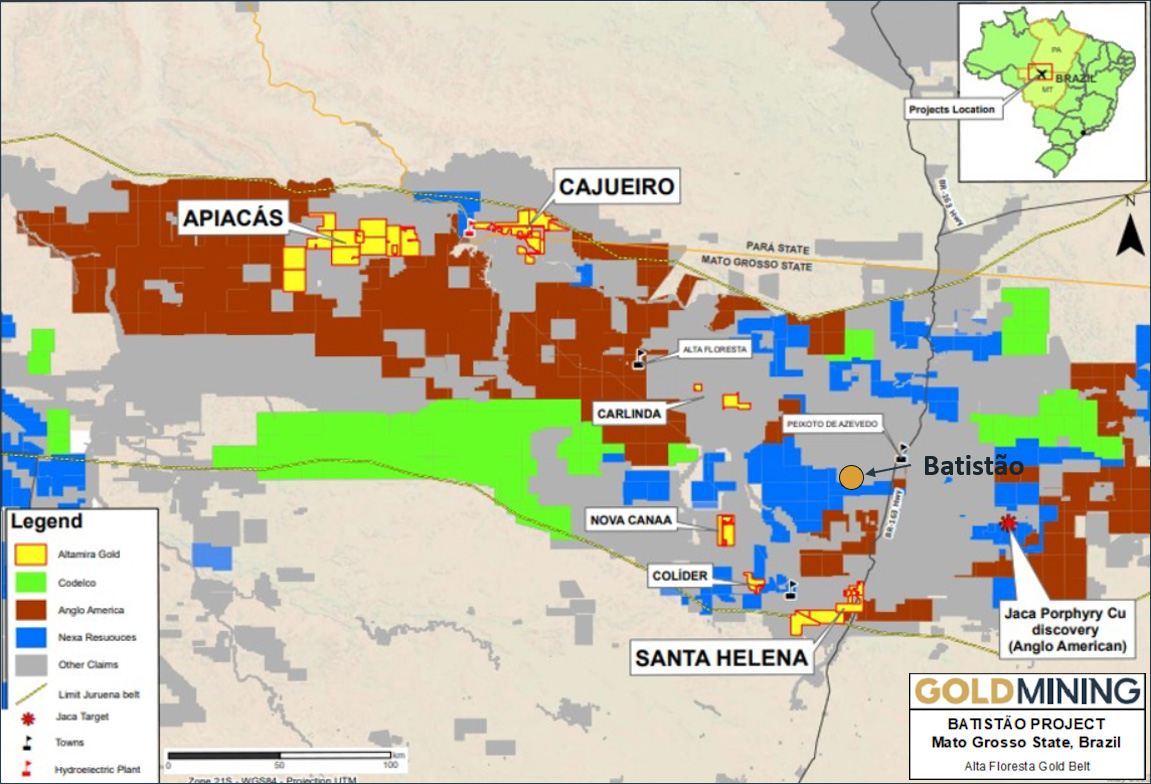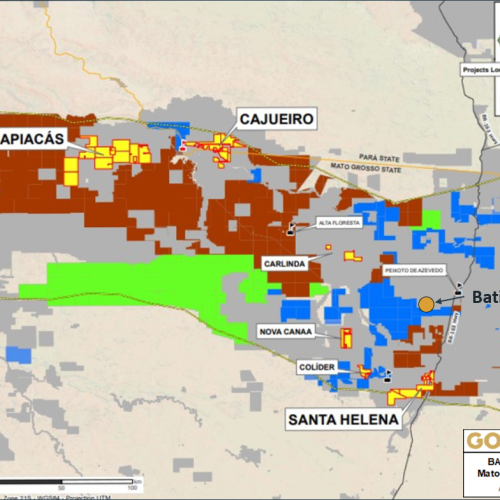Project Snapshot
Overview
The Batistão Gold Project is comprised of one property located 25 km southwest of the city of Peixoto de Azevedo. The land package comprising of 1 exploration permit totals 5,107 ha (51 km2).
The project was discovered by a regional stream sediment survey undertaken by Western Mining. Subsequent soil surveys have outlined a 2 km long gold-in-soil anomaly. The eastern 600 m of this anomaly has been tested to 150 m depth by drilling. The mineralized zone is approximately 30 m thick with grades up to 1.5 g/t gold.
Location
Alta Floresta Gold Belt in Mato Grosso State, Brazil
Property Size
5,108 ha (51 sq km)
Ownership
100%
Commodity
Gold
Infrastructure
Paved highway and nearby electrical power grid
Deposit Type
Orogenic
Location
The Batistão Project is in the municipality of Peixoto de Azevedo, in the Mato Grosso state, located 630km north of Cuiabá and 25km southwest of Peixoto de Azevedo. The project can be accessed from the city of Cuiabá via the highway BR-163.
The Project is comprised of one exploration permit covering 5,107 ha (51 km2), in the Alta Floresta Gold Belt. The claim is 100% owned by GoldMining INC.
Alta Floresta Gold Belt
The Alta Floresta gold belt is known as one of the main gold occurrences in Brazil, the metallogenic province is known for containing high-grade gold. Mining began during the gold rush in the 1980s. Its rocks have distinct characteristics, marked by the abundance of granitoid rocks associated with acidic to intermediate volcanics.
Gold commonly occurs associated with Cu and/or Zn and Pb in quartz and sulfide veins, in stockworks and disseminated in hydrothermal altered rocks. Some of the Au ± Cu mineralization with subordinate molybdenum contents have characteristics that can be associated with porphyry-type systems.
Geology and Mineralization
The Projects contains principally plutonic rocks, predominately comprising deformed granitoids with lesser mafic intrusions, and metamorphic basement comprising gneiss and migmatite.
Granitoids, locally including the Batistão Granite, are the main host to gold mineralization.
Gold Mineralization:
Mineralization at Batistão occurs locally at surface. Gold is related to ferruginous (hematite+goethite) quartz veins, locally with fresh pyrite and hosted within a pinkish coarse-grained biotite-granite. Hydrothermal alteration zones, mainly comprising sericite and epidote, occur proximal with the vein systems.
Activities:
- Historic drilling completed: 35 holes (2,942 m)
- Auger drilling, 109 holes
- Exploratory soil sampling program, 686 samples



